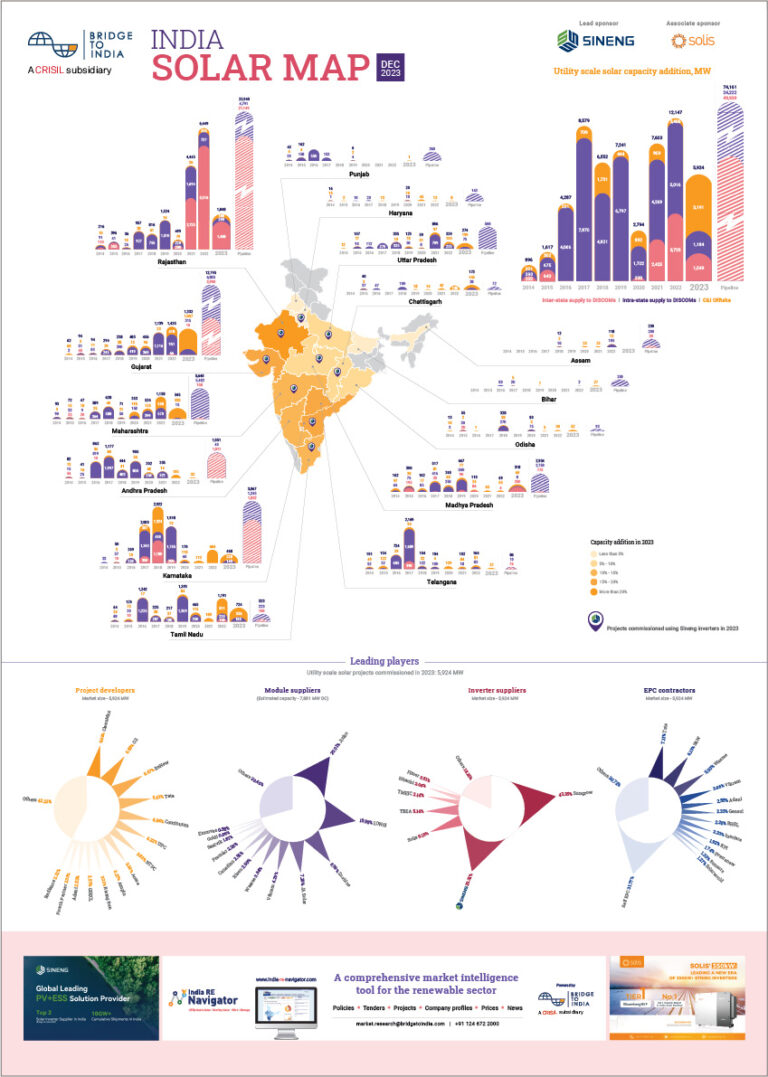SECI has issued a new 1,200 MW ISTS (inter-state transmission system)-based tender. The tender includes two significant changes from the typical template. For the first time ever, the choice of technology – solar, wind or solar-wind hybrid – has been left to the developers. Second, the projects need to include a storage component such that they can supply at least 3 MWh of power/ MW/ day (about 31% of total power output) during the specified “peak hours” of 06:00-09:00 and 18:00-24:00. Developers would be allocated projects based on the lowest peak-power tariffs bid in an e-auction process. Off-peak power would be sold to SECI (ultimately, the DISCOMs) at a fixed price of INR 2.70/ kWh.
- The changes are highly desirable as they pass the burden of evaluating technology and market risks to the developers;
- Tariffs would go up but RE would become more market friendly allowing it to grow faster in comparison to the current scenario;
- The tender marks a fundamental and much needed shift in procurement of RE in India;
Both the changes – technology agnostic and peak power provision – are highly desirable. But SECI need not have stopped here. We believe that the tender ought to be improved further still. Projects should be specified by actual power output and not peak rated capacity. Power procurement agencies should simply specify the quantum of power required with a range-bound hourly consumption profile. Our second suggestion is that the agencies should start offering lower PPA term – test the market initially with 20 years and reduce it gradually to 10 years or even less. The combined essence of SECI’s proposed changes and our suggestions is to let the developers anticipate consumer need, macro-economic environment and market developments, and design their projects appropriately. The private sector is far better suited than the utilities to evaluate technology and market risks. An output based tender design along these lines would result in a more mature and efficient market.
Sure, the effect of these changes would be an increase in tariffs. But it would also mean RE becoming more market friendly and palatable to DISCOMs. There would be significantly less market risk for the DISCOMs and eventually, the investors and lenders through reduction in offtake and curtailment risks. Over time, these changes should widen the appeal of RE and result in faster RE growth in comparison to the current scenario.
But is the market ready? The DISCOMs seem reluctant to buy more expensive RE as the recent cancellation of many tenders has shown. Meanwhile, most developers would also view the changes as negative to their risk profile. Both sets of counterparties would need time to prepare and accept the new reality. Over time, they should both see the changes as positive. It is likely, however, that some smaller developers may be forced out of the market due to inability to cope with increased complexity.
RE bidding market has been dysfunctional for a while. It is clear that the market paradigm needs to change and SECI’s attempt to alter tender design is a crucial initiative. This tender marks a fundamental shift in how renewable power is sourced in India.












